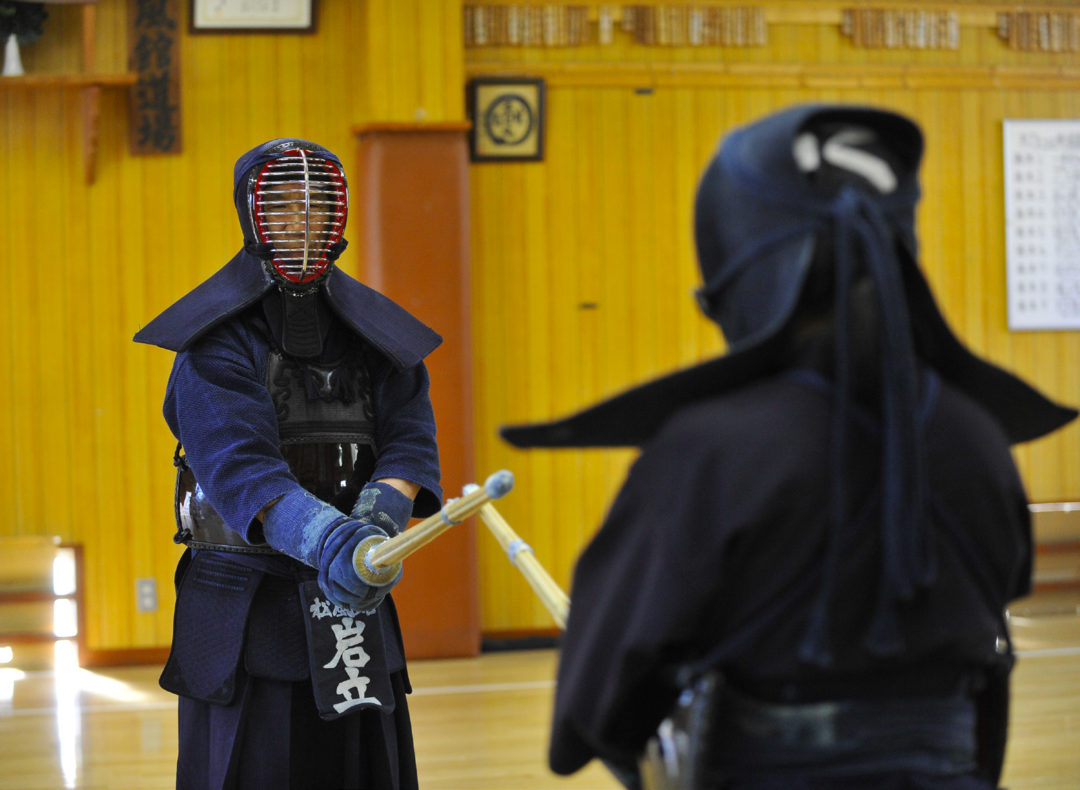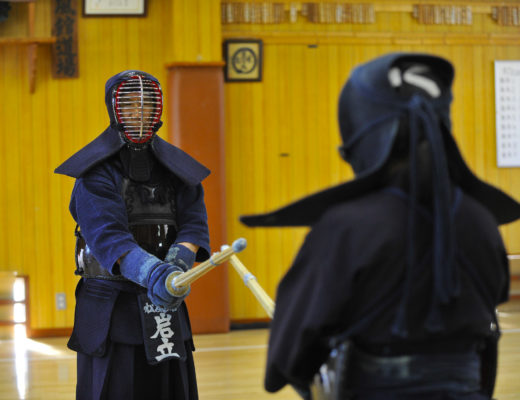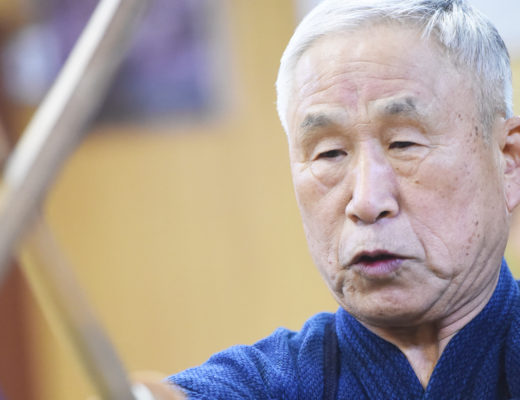Iwatate Saburo, Hanshi 8th Dan
Born in 1939 in Chiba Prefecture. After graduating from Chiba Prefecture Narita High School, he got a job at Chiba Prefecture Police. Upon retirement from the Tokuren, Iwatate sensei served as a Kanto District Police School Instructor and Chiba Prefectural Police kendo head teacher. Starting in 1978, Iwatate began teaching at the Shofukan Dojo and a number of swordsmen from Japan as well as overseas have gathered to ask for the guidance of Iwatate Saburo.
Currently, he is the director of Shofukan, Shobi Gakuen University kendo head teacher, the All-Japan Kendo Federation councilor, All Japan Kendo Federation vice-president and the All Japan Senior-Kenyukai chairman.
No matter how old or what Dan grade you are
Having a teacher is essential for improving Kendo
In Kendo, I say we do “Keiko” instead of “practice”. Keiko means to “study the past” and learn what our ancestors have left behind.
Yagyu Shinkage-ryu teaches the “Sanma no Kurai” which divides the training phases into 3 parts: the learning phase under a teacher, the adjusting phase where one questions the teachings and adjusts accordingly and the phase where it’s being put into practice or Keiko. By repeating this 3 step process, the student will improve himself.
There are no Ryuha (schools of style) in modern Kendo, and anyone can learn Kendo openly. I was one of those who started Kendo after the war, so I have reached the present with the guidance of various teachers as I grew up in high school and during elite squad training, etc.
Recently, the most worrisome thing about Sanma no Kurai is the learning phase. I think everybody is making their adjustments and doing their Keiko, but what about learning?
In Kendo, we apply mutual pressure on each other through the Shinai and strike each other while searching for openings. There is a natural order to this. That is, to improve oneself under observation of the teacher. I feel that this observation is overwhelmingly in decline in modern Kendo.
When you start contributing to society and you have the opportunity to receive training, the number of opportunities to receive specific suggestions and advice will be fewer. However, this is just a bad habit. In Kendo, we often think that we are doing the right thing only to find out the idea to be distorted. I think it is necessary to actively be aware of creating opportunities to receive advice.
Many people do Keiko at Shofukan, including foreigners. I always try to do Keiko with those who come for the first time because there is no way to give advice without Keiko.
When I was an assistant professor at Chiba Prefectural Police School, I received a letter from Professor Mabuchi Kokichi saying, “Iwatate, read this.” When I went through it, I found questions about Kendo, but Mabuchi Sensei did not practice with the sender nor exchanged words with him. Mr. Mabuchi laughed, “I can’t teach someone whom I’ve never done Keiko with” and I think that is exactly right. Kendo cannot be taught without actually doing Keiko.
Recently, there are high school students who graduate without training with their Kendo club instructor even once in 3 years of high school. Kendo must be experienced. When looking at multiple students at once and the instructor wears his Men, he will have trouble observing. However, in accordance with the phrase 師弟同行 (Shitei Dogyo / the process of mutual study between teacher and apprentice), there are many things in Kendo that can only be taught by crossing Shinai. I am also involved in teaching university students. Although the number of students is quite large, I always try to do Keiko with them.
Is important for those who study Kendo to have a teacher. Ogawa Chutaro Sensei says “choose a good teacher even if it takes you 3 years” and the people who do great things have good people around them. Players who play an active part in the All Japan Kendo Championship do so on their own ability, but they are always studying Kendo with good leaders.
In addition, even general enthusiasts who are quick to go up in Dan grades are often seriously studying Kendo with their teachers. Especially if it is 6 dan, 7 dan, and even 8 dan, it will not work well in my style. I believe that it will be good to have a teacher without forgetting the eager attitude of learning no matter how old you are and that stacking up your Keiko this way will lead to progress.
The rest of this article is only available for Kendo Jidai International subscribers!




